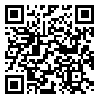Introduction: Collective mobility focuses on sharing trips, transport modes, and infrastructures. This can reduce the number of vehicles on roads. Thus, it is important to evaluate and measure transport subsystems. One of the most important of transport subsystems is urban transport as a key element of human and commodity transportation, playing an essential role in the viability of all communities, and as a justified choice to avoid unintended urban problems such as road and traffic congestion as well as air pollution. Therefore, urban transport organization is one of the necessities of urban planning. However, But, transport itself is not such a challenge, but rather, it is a gift. However, it will become a problem when its effects will cause dissatisfaction with the transport network and thereby reduce the quality of urban services. Political-managerial, environmental, physical, and socio-cultural barriers are involved in transportation challenges, most visible of which are physical barriers. These barriers vary in different Iranian cities according to their natural and human geography, but in Ahvaz City, they are effective on preventing Land use barriers to transportation apart from human, environmental, and climate issues. Also, according to Ahvaz Metropolis Second Five Year Development Plan in the field of transportation and traffic, one of the most important strategies of Ahvaz transportation and traffic development is to identify the barriers to transportation development in different dimensions, one of which is the physical barriers to transportation, doubling the significance of doing research in the field. Therefore, these barriers need to be identified and categorized in each public transport infrastructure and land use. The present study aims to investigate the physical barriers of inter-urban public transport in six dimensions of stations, urban arteries, urban terminals, urban public parking lots, fuel stations, and public transport urban fleet in the eight urban districts of Ahvaz and seeks to answer the following question. What are the most important physical barriers to urban transport development of Ahvaz Metropolis? To this end, the study makes attempts to examine and analyze these barriers and identify the significance of each one in order to prioritize them in terms of effectiveness and weight in Ahvaz transportation planning, and then, zone each of these barriers in Ahvaz.
Methodology: The present study is applied-theoretical in terms of objectives; also descriptive-analytical and survey in terms of research methods. The research data was collected through documentary, library, survey, and interviewing with people and urban planning experts. The research population consisted of citizens of eight districts of Ahvaz Metropolis districts. The questionnaires were distributed among 130 participants selected via stratified sampling technique according to the weight ratio of each district. To rank the land use barriers in each of the different transport infrastructures, the ARAS decision making method was employed. To map. Moreover, the kriging interpolation method was employed for zoning these barriers in Ahvaz with ARC GIS10.3 software. After interpolating all the obstacles using the Reclassify tool, which is a subset of Spatial Analyst Tools in the Arc Toolbox., the maps were drawn into a five-point spectrum (very low, low, medium, high and very high) and finally overlaid using the Weighted Sum function.
Results and discussion: In sum, this study identified 36 key barriers to each of Ahvaz public transport land use for analyzing the land use barriers to public transport development in Ahvaz. These barriers were for belonged to public transport stations (9 factors), urban arteries (9 factors), urban terminals (9 factors) and public parking lots (9 factors). This classification is such that it encompasses the different public transport modes in Ahvaz, such as those used to measure the public transport stations of the bus and taxi stations. In measuring urban arteries, physical barriers to Ahwaz's various public transport modes such as walking as well as bus and taxi driving were considered. In assessing the barriers related to urban terminals in Ahvaz, eight existing terminals were evaluated. Due to the lack of accurate statistics on types of urban public parking lots such as mechanized and non-mechanized parking, flat or floored, marginal, etc., public parking lots, barriers to urban parking lots are generally evaluated as being inadequate access, organizational carving, weakness of the heating and cooling system, avoidance of health centers, lack of fleet and incompatibility which are the major barriers to stations, urban arteries, terminals, parking lots, urban transport fleets and fuel stations, respectively. In addition, zoning these barriers also depicts that most of Ahvaz’s zones in terms of stations, urban arteries, urban terminals, parking lots, transport fleets and fuel stations were in the range of relatively inappropriate, relatively inappropriate, relatively inappropriate, relatively inappropriate, very inappropriate, and moderately appropriate levels, respectively.
Conclusion: The present study employed barriers covering each of the six physical dimensions. We then need to rank these barriers to identify the most effective barriers to each of the six dimensions of physical barriers (stations, urban terminals, urban arteries, public parking lots, fuel stations, and transport fleets). The significance of this ranking is that the underlying organizations are not capable of removing all of them at a given time, and removing these berries barriers over certain courses of time is important. To this end, we performed each of the barriers to the six dimensions separately. Until these criteria are met, the extent of the barriers to each of the physical dimensions will be identified; and public transport development planning was will be facilitated. Eliminating existing barriers is among public transport development strategies. The research findings can be generalized and employed by the Municipal Transport and Traffic Departments, the Urban Housing Agency, the Reconstruction and Renovation Organization, and other related agencies. Collecting and extracting multiple barriers to public transport in each of the applications and categorizing them as a package that informs the related organizations of the status quo are among one of the significances of the research findings which depict that the geographical distribution of these barriers in the study area is known.
Article Type:
Original Research |
Subject:
civil planning Received: 2019/09/22 | Accepted: 2020/04/5 | Published: 2020/06/30












